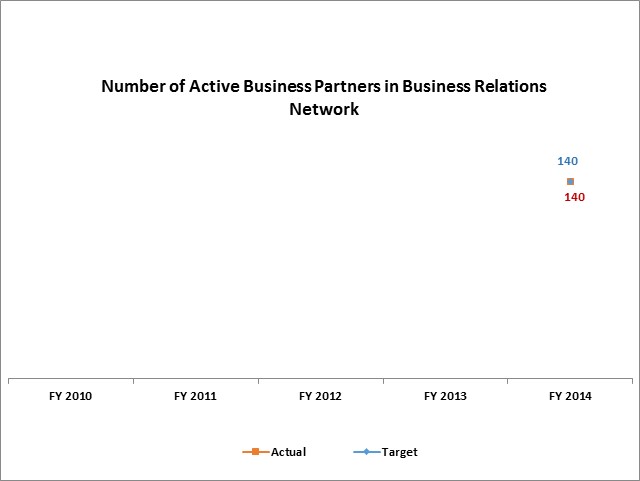HB0003: Item 94The Legislature intends that the Utah State Office of Rehabilitation prepare proposed performance measures for all new state funding or TANF federal funds for building blocks and give this information to the Office of the Legislative Fiscal Analyst by June 30, 2015. At a minimum the proposed measures should include those presented to the Subcommittee during the requests for funding. If the same measures are not included, a detailed explanation as to why should be included. The Utah State Office of Rehabilitation shall provide its first report on its performance measures to the Office of the Legislative Fiscal Analyst by October 31, 2015. The Office of the Legislative Fiscal Analyst shall give this information to the legislative staff of the Health and Human Services Interim Committee.
HB0003: Item 94The Legislature intends the departments of Health, Human Services, and Workforce Services and the Utah State Office of Rehabilitation provide to the Office of the Legislative Fiscal Analyst by June 1, 2015 a report outlining how funds are distributed within the state when passed through to local government entities or allocated to various regions and how often these distributions are reviewed and altered to reflect the relevant factors associated with the programs. (1) Is the program considered a statewide program (this would include something that serves all rural areas)? a. Is the implementation of the program really statewide? If not, is there a compelling reason why? (2) Who gets the money (by county)? (3) What is the methodology for distributing the money? a. How does the distribution compare to actual need as expressed by population? i. [If distributions are not reflecting current need (as represented by population), please explain why not?] b. If not done by population, what is the reason? (4) Does statute say anything about distribution and equity for the program?
SB0002: Item 87The Legislature intends the Utah State Office of Rehabilitation (USOR), in conjunction with the Utah State Office of Education and the Utah State Board of Education, provide to the Office of the Legislative Fiscal Analyst no later than September 1, 2015: 1) A report on the USOR fiscal status for the recently completed state Fiscal Year 2015, including identification of one-time funding sources used to pay for ongoing services; 2) A projection of the USOR fiscal status for state Fiscal Year 2016, including any anticipated uses of one-time funding sources to pay for ongoing services; 3) A projection of the USOR anticipated fiscal status for state Fiscal Year 2017, including any anticipated uses of one-time funding sources to pay for ongoing services; 4) Any anticipated reductions in paid client services for state fiscal years 2015, 2016, or 2017; 5) The status of paid client services and numbers affected by reductions, if any; 6) The status of the Order of Selection waiting list and estimated numbers affected, if any; 7) The status of federal Maintenance of Effort and its effect on state liability; 8) Recommendations regarding the organizational placement of USOR and its subunits in order to provide proper oversight, management, and support; and 9) The history and current status of the individuals with Visual Impairment Fund.
SB0002: Item 87The Legislature intends the Departments of Workforce Services, Health, Human Services, and the Utah State Office of Rehabilitation provide a report regarding each agency's highest cost individuals and possible efficiencies through coordination, early intervention, and prevention. The Legislature further intends these agencies provide a report to the Office of the Legislative Fiscal Analyst by September 1, 2015. The report shall include the following regarding high cost individuals: 1) a summary, by program, of individuals receiving services in excess of $100,000 total fund annually in any given agency, what percentage of total costs is spent on these individuals, and what the agency is doing to manage these costs in an efficient manner, 2) an assessment of these high cost individuals receiving services from multiple agencies, 3) a description of agency coordination regarding high cost individuals accompanied by a list of areas where agencies specifically coordinate on these high cost individuals, 4) recommendations regarding how best to serve these high cost individuals in least restrictive settings where appropriate and consistent with choice, and 5) recommendation on how agency efforts might better be coordinated across programs.
SB0002: Item 87The Legislature intends that the Utah State Office of Rehabilitation prepare proposed performance measures for all new state funding or TANF federal funds for building blocks and give this information to the Office of the Legislative Fiscal Analyst by June 30, 2015. At a minimum the proposed measures should include those presented to the Subcommittee during the requests for funding. If the same measures are not included, a detailed explanation as to why should be included. The Utah State Office of Rehabilitation shall provide its first report on its performance measures to the Office of the Legislative Fiscal Analyst by October 31, 2015. The Office of the Legislative Fiscal Analyst shall give this information to the legislative staff of the Health and Human Services Interim Committee.
SB0003: Item 140The Legislature intends that, under 63J-1-206(e), the Utah State Office of Rehabilitation transfer $9,837,000 from the federal Aspire Grant between the Executive Director's Office to the newly created Aspire Grant program beginning in FY 2016.
SB0007S01: Item 32The Legislature intends that the Utah State Office of Rehabilitation report on the following performance measures for its line item: (1) Vocational Rehabilitation - Increase the number of rehabilitation outcomes (Target = 3,665), (2) Vocational Rehabilitation - maintain or increase a successful rehabilitation closure rate (Target = 60%), and (3) Deaf and Hard of Hearing - Increase in the number of individuals served by DSDHH programs (Target = 7,144) by January 1, 2016 to the Social Services Appropriations Subcommittee.


